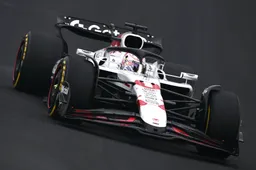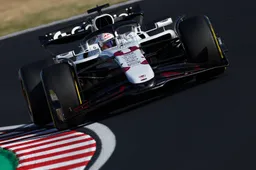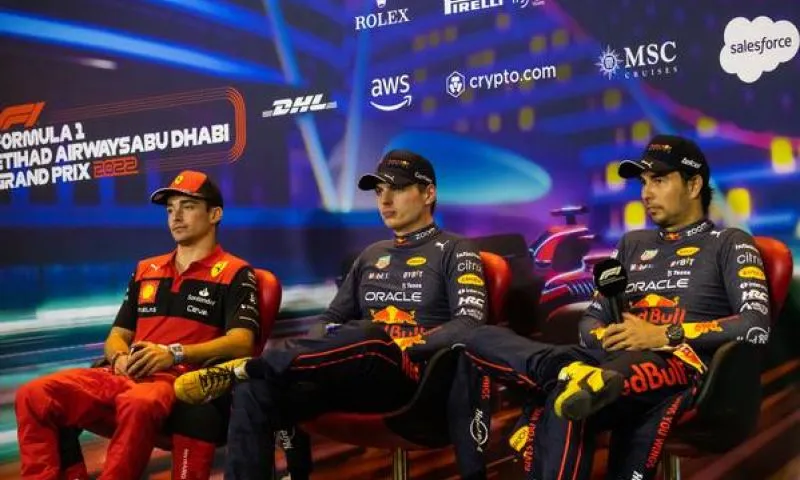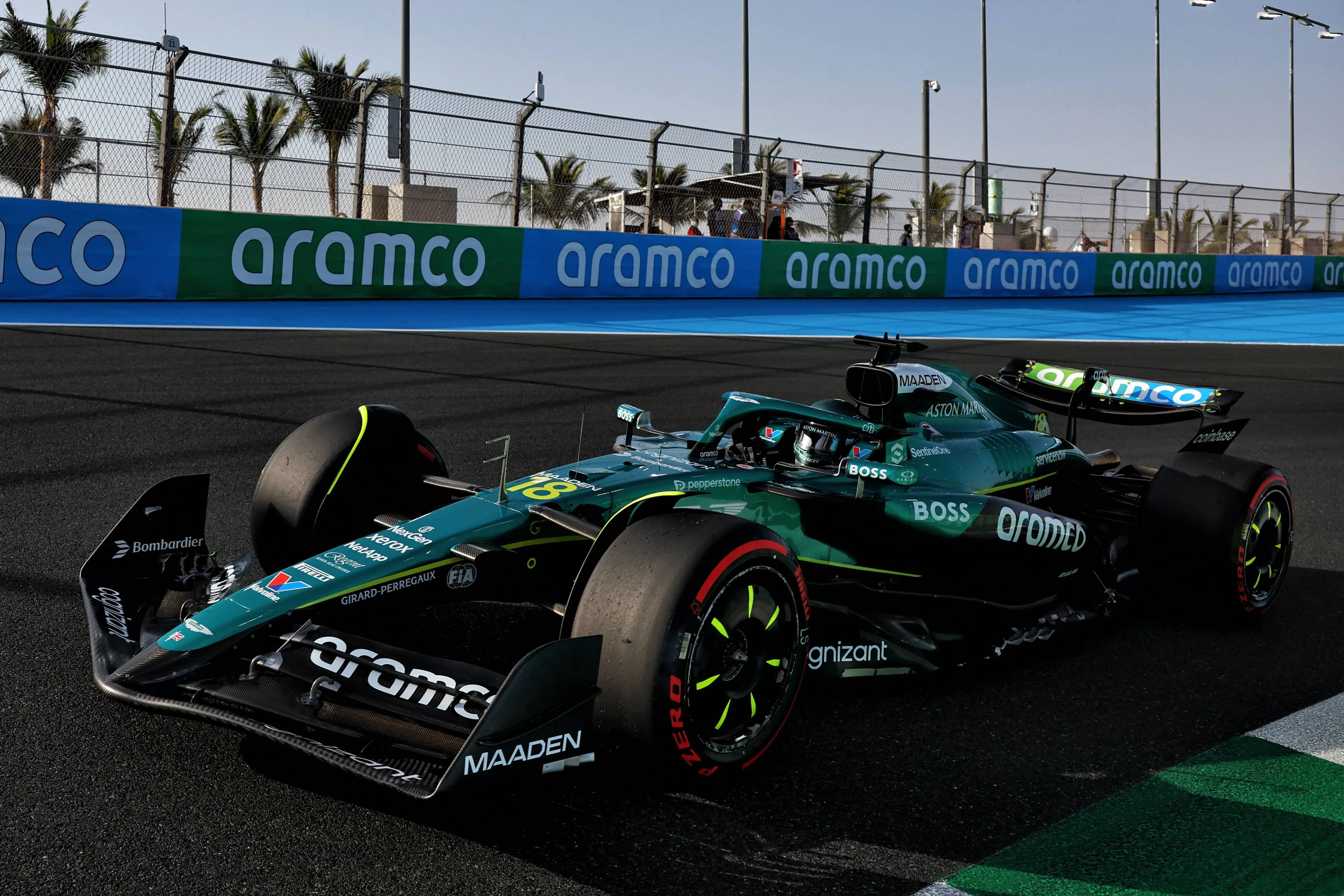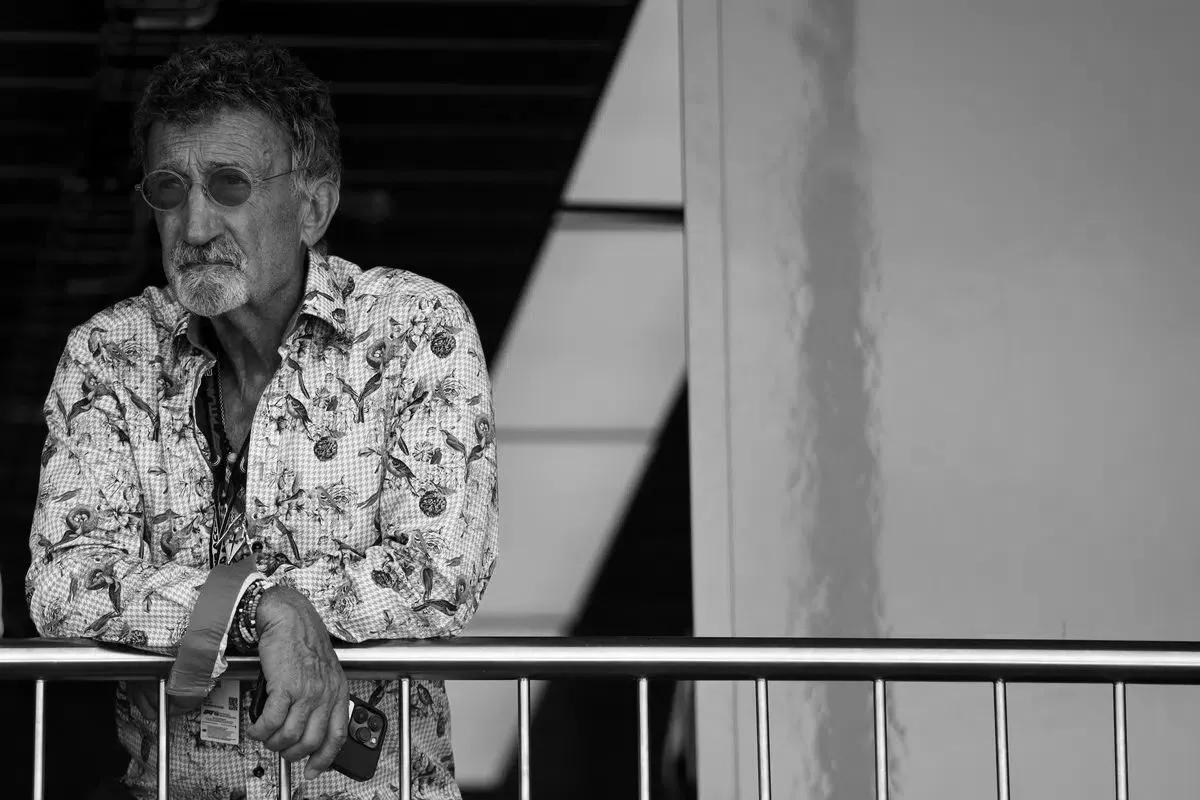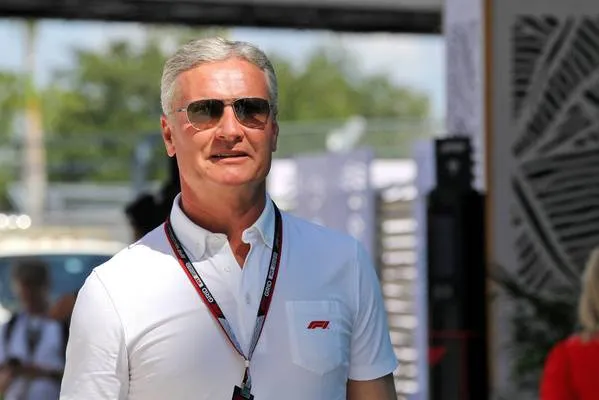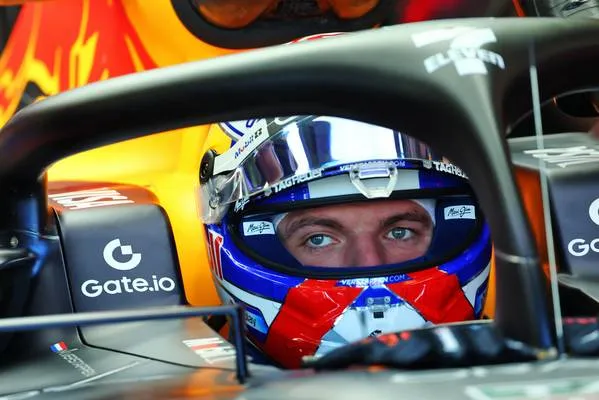F1 Tech | Inside the secrets of Verstappen's victory in Suzuka
20:30, 07 Apr
Updated: 09:39, 08 Apr
21 Comments
The Japanese Grand Prix offered a very unusual weekend, as Verstappen was able to make the difference in both qualifying and the race in front of the two McLaren, who were expected as the big favourites on the eve of the weekend. Red Bull made the right choice on Friday by choosing a lower downforce set-up, that eventually played dividends in the race. Let’s try to understand why.
First 'minor' updates for Red Bull
In Japan, Red Bull introduced the first small updates of the season, which included a new engine cover and minor changes to the rear suspension cover and rear brake duct.
For what concerns the engine cover, it has been shrunk. As it's visible in the drawing below, the rear exit that pushes air directly onto the beam wing has been narrowed both in height and width, as highlighted by the yellow arrows. This new design aims at increasing the aerodynamic efficiency of the car, improving the airflow quality under the rear wing.
Furthermore, for the race in Suzuka, the vents on the sides of the engine cover, which are designed to dissipate additional heat, have disappeared (light blue arrows). This choice was related to the very low temperature faced during the weekend in Japan and also contributed to improving the general efficiency of the RB21. A more adherent bodywork makes the flow along the entire bodywork cleaner and increases the overall efficiency of the car.
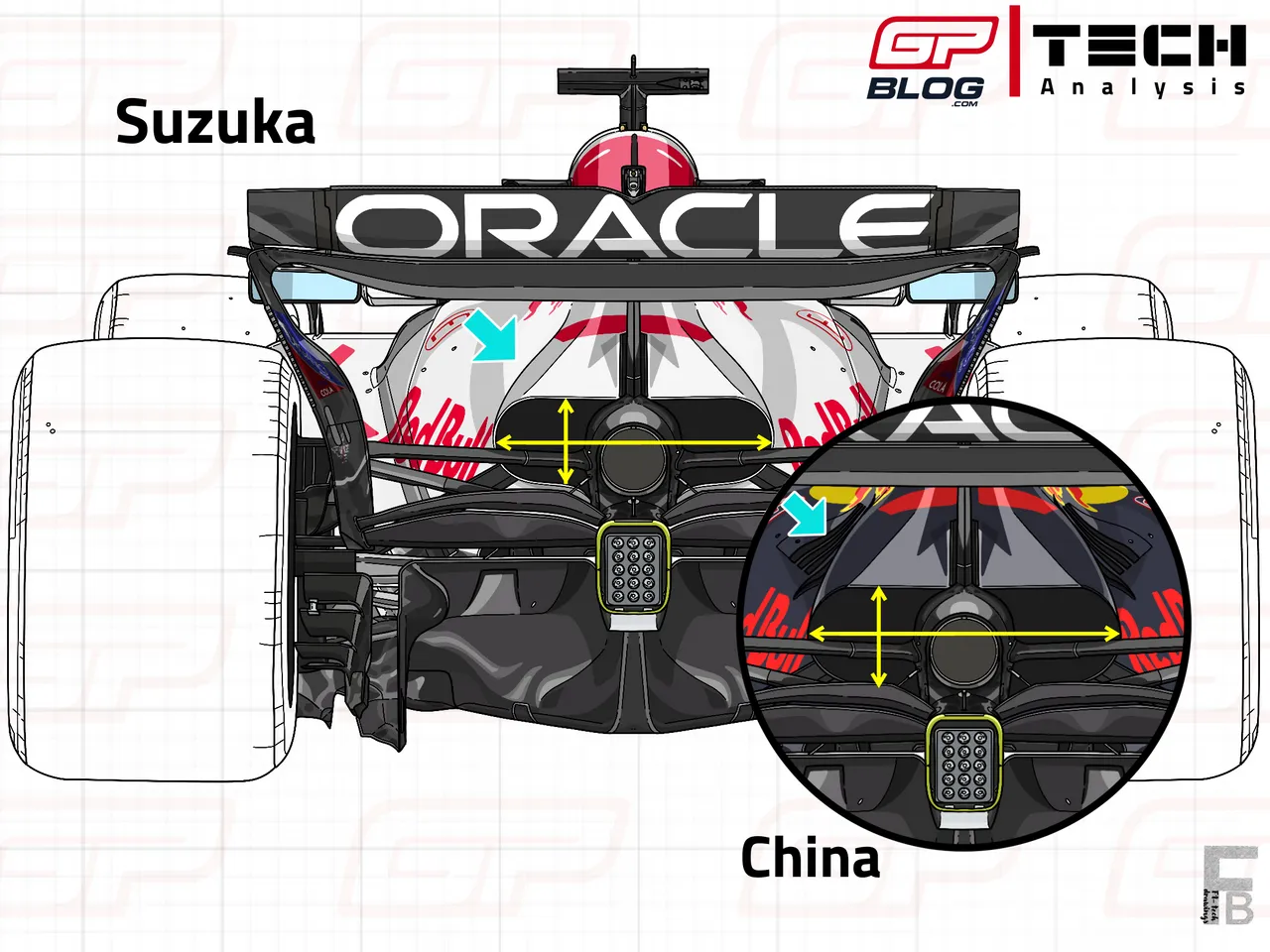
Red Bull new engine cover for the Japanese Grand Prix
This aspect was underlined by Red Bull’s Chief Engineer Paul Monaghan himself on Friday: “So we're just trying to make a small refinement to enhance that a little bit. It gives you a small cooling improvement, it means we can run the car more closed and do less harm to the rear wing.”
The other update conceded small changes to the rear suspension and brake duct: as shown in the drawing below, the push rod tie has a new fairing, which has a more linear shape than the previous version, in which the cover had a more curvilinear design in its central portion (orange arrows).
Moreover, the pink arrows also highlight the addition of a flow diverter along the vertical carbon plate that sucks air into the brake duct. These small winglets divert airflow to increase the amount of air that goes into the brake duct, improving the cooling of the rear rim (and therefore of the tires). The pink arrow at the top shows how the last element now has a more upward curvature, precisely to divert the air differently.
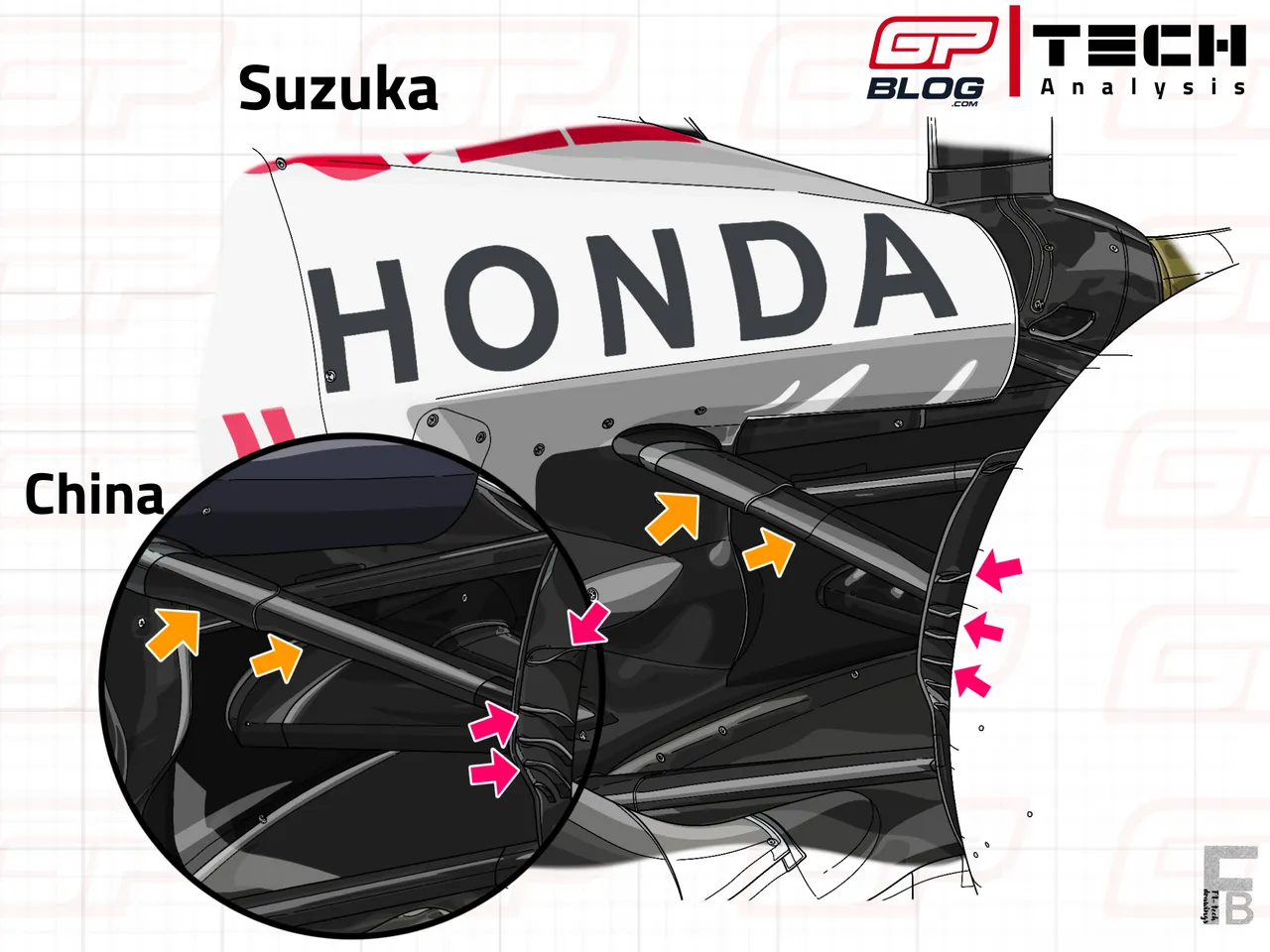
RB21 suspension fairing and brake duct Japan
In this case, however, these are very small changes, which probably work in synergy with the new engine cover, but which bring a very minimal improvement in terms of performance.
Monaghan also suggested how their goal is to improve the car’s stability, making it easier for the drivers to extract its full potential: “Now we've just got to try and get a little bit more speed out of this one, try and improve its stability to the point that drivers find it easier to drive.”
Read also
Big turnaround between Friday and Saturday
Despite these new components, the RB21 didn’t look particularly balanced on Friday in Suzuka: during FP1, in fact, the rear of the car was sliding massively both at the exit of slow corners and also through the esses in the first sector, with Verstappen struggling a lot to keep the car on track.
This lack of grip on the rear axle was mainly caused by understeer: to give a more balanced car to Tsunoda, Red Bull started the weekend with a neutral car in terms of balance, but for Verstappen didn’t seem to click. The car was suffering from understeer in the high-speed and in slow corners, which inevitably translated into oversteer as soon as the driver went on gas. On the other side of the garage, this set-up really helped Tsunoda, who was able to be within a tenth of the Dutch World Champion during first practice.
This set-up, however, didn’t bring the wanted performance: the RB21 was extremely slow both in the qualifying simulations on the soft tyre (0.516 seconds in FP1) and in race pace simulations, where Verstappen’s average was around a second slower than Norris’, despite running the soft tyre.
The balance was so bad that Verstappen lost confidence in the car, as he revealed to F1TV after Friday’s sessions: “Quite difficult to put the lap down. You need a lot of confidence and commitment around here and at the moment I don’t feel like I can use that.”
As a consequence, Red Bull worked hard on Friday night, making tests and comparison runs on the simulator to find an answer to they lack of performance.
The work done at the Milton Keynes factory eventually payed off, as the team were able to completely reverse the scenario on Saturday morning. The RB21 looked much quicker on track and with a stronger front-end in the cornering phase, just the way Verstappen likes it. This choice seemed to work particularly well with the low downforce set-up adopted: on Friday, both drivers run the lower downforce rear wing and beam wing (the same spec used in Australia). After the pace issues faced in FP1, only Verstappen kept using this set-up, while from FP3 onwards Tsunoda switched to a higher downforce rear wing, matched with the same low downforce beam wing (blue arrows).
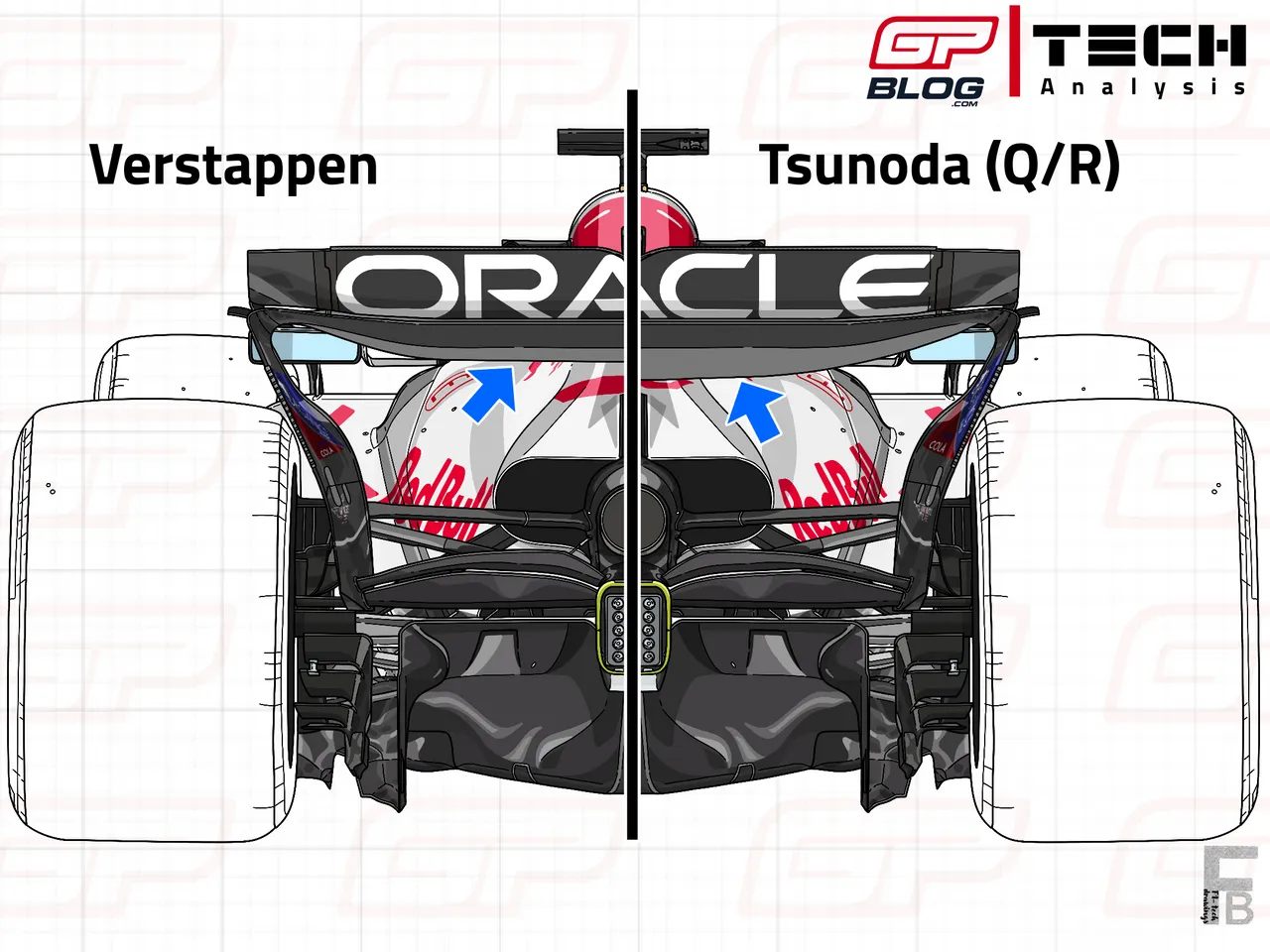
Verstappen and Tsunoda different set-up for qualifying and race
The goal was to give Verstappen a car that could take advantage of the high grip offered both by the new tarmac in Sector 1 and by the soft tyre in qualifying, to start the race in the highest possible position. In fact, the very efficient set-up matched with the strong front end made Verstappen’s RB21 competitive in all sectors: the new tarmac in Sector 1 offered a very high grip through the high-speed, making the car much more stable despite the lower downforce set-up. In sector 2 and 3, the aerodynamic efficiency made the difference, as it allowed Verstappen to conquer all the straights despite a not optimal traction out of slow corners.
All these aspects combined, along with Verstappen’s huge talent, allowed him to get a maiden pole on Saturday in Suzuka, only 12 milliseconds in front of Norris in P2.
Verstappen himself underlined how all the parameters aligned for his final lap in the usual post qualifying interview: “Yeah, just throwing a lot of different things to try and make it more balanced, which is a bit of a difficulty for us at the moment. And even in qualifying that is still the same. But yeah, I think on low fuel over one lap, some bits you can mask a little bit.”
The reasons behind Verstappen's success
Red Bull’s choice to prioritise qualifying over the race had a specific reason: on a track like Suzuka qualifying is crucial due to the difficulty in overtaking, caused by the narrow layout and the single DRS zone.
This year, other factors made qualifying more important than ever: due to the new tarmac in Sector 1, the very low temperature during the race and the green surface (caused by the rain fallen in the morning) the track offered a very high level of grip but generated low stress into the tyres, making tyre wear almost inexistent during the race on Sunday.
As a consequence, the lower downforce set-up adopted by Red Bull on Verstappen’s car to favour qualifying, played dividends in the race as well for different reasons:
- first of all, the pole position gave Verstappen the chance to run in free air, giving him a big advantage in tyre management;
- The new tarmac, which offered a high grip and low deg, favoured unloaded set-ups, like the one adopted by Red Bull.
- The low tyre wear made it possible for the RB21, despite being an inferior car in terms of tyre management , to have a similar pace to the MCL39, in contrast to what seen during the first two races of the season. As underlined by Andrea Stella after the race, a gap of 7/8 tenths was needed to overtake the car in front, making it impossible for Norris or Piastri to attack Verstappen: “With the new tarmac, Suzuka completely changed its personality, as the degradation is now very low. This means that it’s very difficult to overtake is you have the same strategy, you need 7/8 tenths of pace advantage to overtake the car in front.”
- RB21’s great efficiency allowed Verstappen to gain time on the two McLaren in the second and third sector, being quicker in the straight-line and in all traction phases (out of turn 11 and 17).
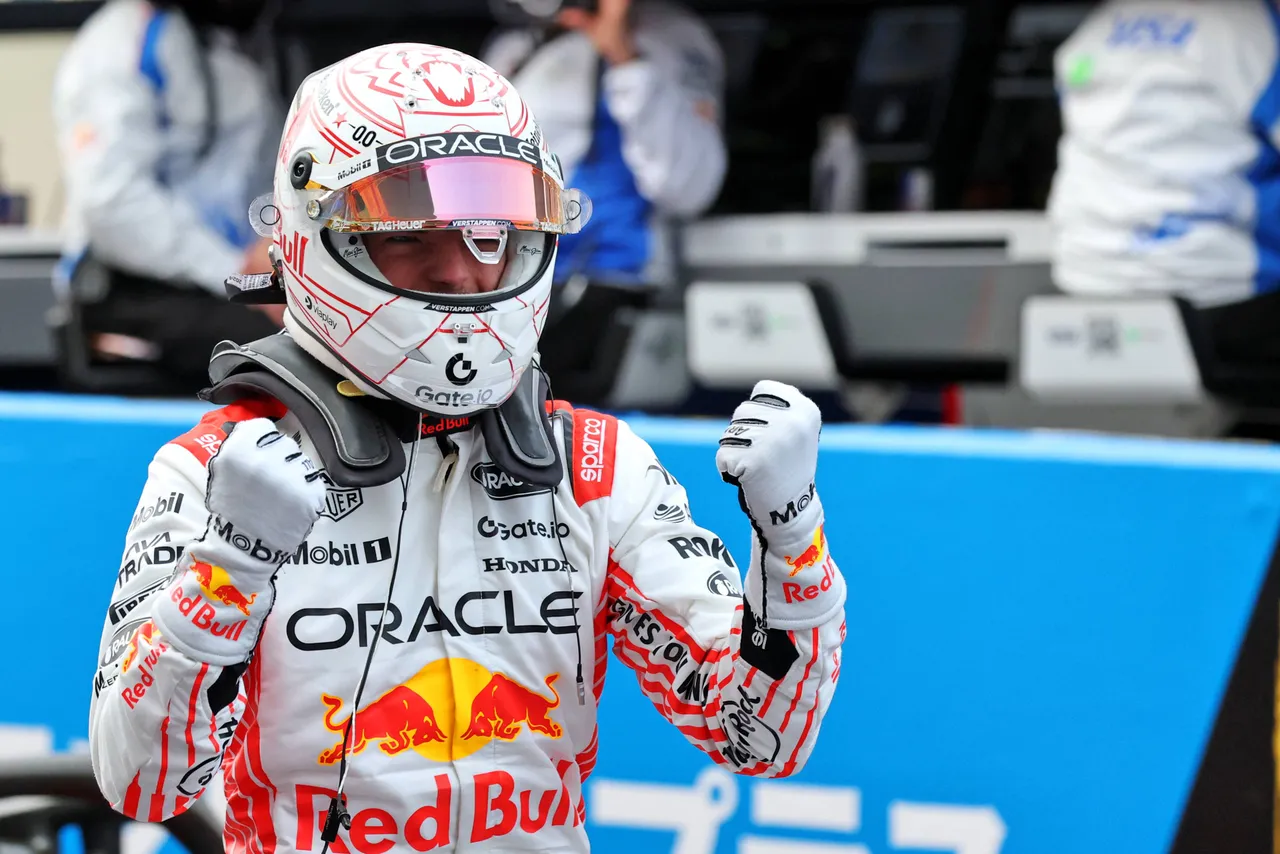
Verstappen underlined how all these factors helped him have the edge over the two McLaren in the post-race interviews: “ I do think that probably the the cooler track temp helped us out a bit, less tire overheating. I think most of it of course was done yesterday being able to start from pole because around here it's just very hard to follow.”
In conclusion, Red Bull was able to win the Japanese Grand Prix by adopting the perfect strategy and set-up on Saturday, that allowed Verstappen to grab pole and stay in front for the whole race. A huge praise goes to the 4-time World Champion as well, who is the clear demonstration that the driver, if has the right car, can still make a huge difference in modern F1.
The next race in Bahrain will probably show a comeback to normal performance levels, but it’ll be particularly interesting to see and analyse the first proper updates of the season and understand how they’ll affect teams’ performance.
Read more about:
Popular on GPBlog
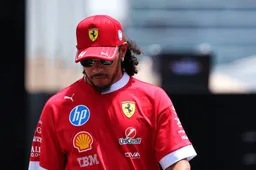
1
Former Red Bull Driver predicts early departure of Hamilton from Ferrari
1256 times read
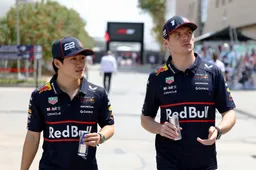
2
How Tsunoda compares to Verstappen versus Lawson in 2025
392 times read
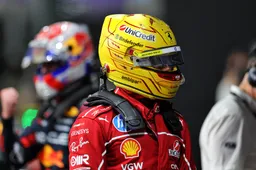
3
F1 Today | Hamilton exit predicted, and exclusive interview with former F1 driver
377 times read

4
Horner calls Verstappen's 2021 title win 'the highlight of Red Bull's history'
356 times read



